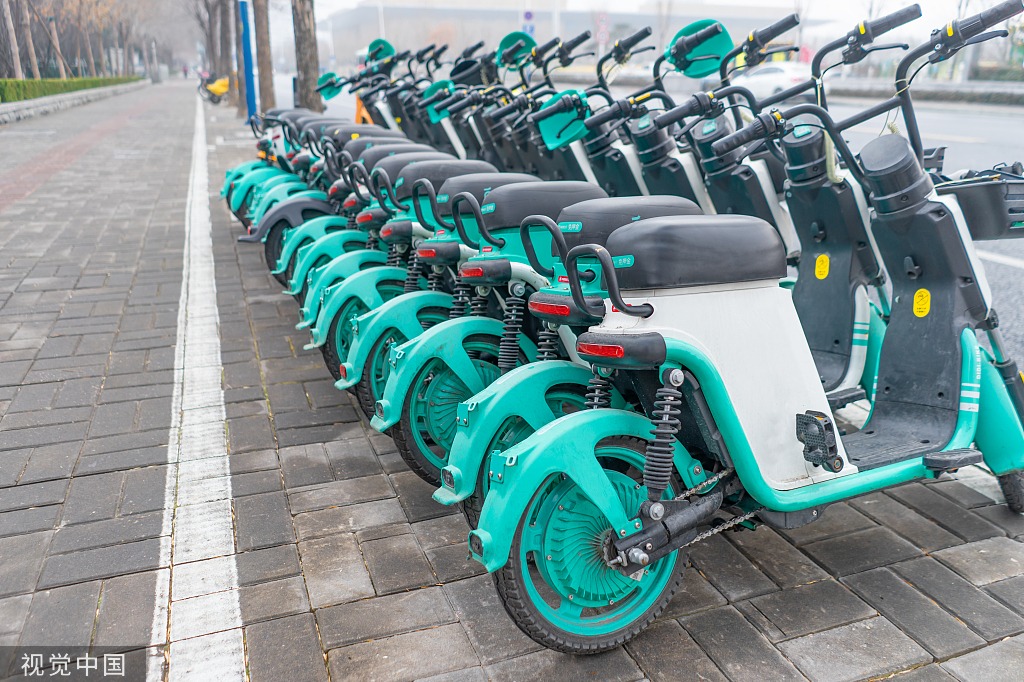More flights between China, US coming
By LUO WANGSHU | China Daily | Updated: 2023-10-30 10:22

Added services likely to cut down prices, but visa issuance may hinder recovery
The number of direct flights between China and the United States will be further increased next month as a result of positive steps made by both sides to promote an orderly recovery of international passenger travel.
The US Department of Transportation said on Friday that Chinese airlines could make 35 roundtrip flights to the US a week, up from 24, starting Nov 9.
The number will be equal to the number China will allow for US airlines. In total, Chinese and US carriers will be allowed to operate 70 weekly round-trip flights from Nov 9.
Seven Chinese airlines will operate the flights: Air China, Beijing Capital, China Eastern, China Southern, Hainan, Sichuan and Xiamen airlines, according to an order amendment released by the US Department of Transportation on Friday.
According to the amendment, the goal is to improve the environment for airline companies from China and the US to maintain "a competitive balance and fair and equal opportunity".
The US will continue ongoing and productive dialogue with the Civil Aviation Administration of China to facilitate a gradual, broader reopening of the air service market between both countries, the document said.
Also on Friday, Liang Nan, director of the transport department of the CAAC, said, "The administration will continue to encourage and support Chinese and foreign airlines to resume international passenger flights, improving the international route network and supporting people movements between China and foreign countries to ensure stable foreign trade and investment."
The new winter and spring civil aviation season in China started on Sunday and will end on March 30. During the season, China's international flights are expected to return to 70 percent of the volume seen in 2019, Liang said.
She said that 13,004 international flights involving 65 countries are planned every week during the season, but the number between China and the US has not yet been released.
Due to the pandemic, international flights to and from China were greatly reduced. In March 2020, China introduced the "circuit breaker" policy — suspending flights operated by an airline for two weeks if five or more passengers tested positive for COVID-19 upon landing in China, or for four weeks if 10 or more passengers tested positive.
Only a very small number of international passenger flights continued to operate during the pandemic. Data from the CAAC showed that in August 2021, the number of flights to and from China was about 2.15 percent of the volume recorded in 2019.
The number of international flights has risen gradually since January, after China optimized its response measures to COVID-19 and promoted the resumption of cross-border air travel.
From Oct 16 to 22, a total of 7,750 international passenger flights operated, about 51 percent of the volume before the pandemic. Those flights involved 61 countries, according to the administration.
Although the international civil aviation market has recovered well, China-US air service is far from fully resumed.
In 2019, more than 300 round trips were operated every week between China and the US, according to Lin Zhijie, a civil aviation industry analyst.
After the increase next month, the number of China-US flights will be about 25 percent compared with the volume in 2019, he said.
The volume of flights affects prices. According to Orbitz, a global travel planning website, the cheapest price ticket from Shanghai to San Francisco in November is about $620.
The lowest ticket price for the end of this month is around $890, as of Sunday morning.
"Restricted by the number of flights, the ticket price between China and the US is still high, with about 10,000 yuan ($1,366) for a one-way ticket. The operation of more flights from 48 to 70 per week can help lower ticket prices," Lin said.
There are two key factors in promoting the recovery of passenger travel between China and the US — an increase in the number of flights and visa issuances, according to Lin.
"It still takes quite long, about two to four months, to get a visa. As the number of flights has gradually recovered, the visa problem has become a bottleneck that needs to be solved," he said.
"At present, the resumption of flights between China and the US has released positive signals, and it can indeed alleviate the problem of insufficient flight capacity and high fares, but the recovery in the future is still uncertain," Lin said.
























